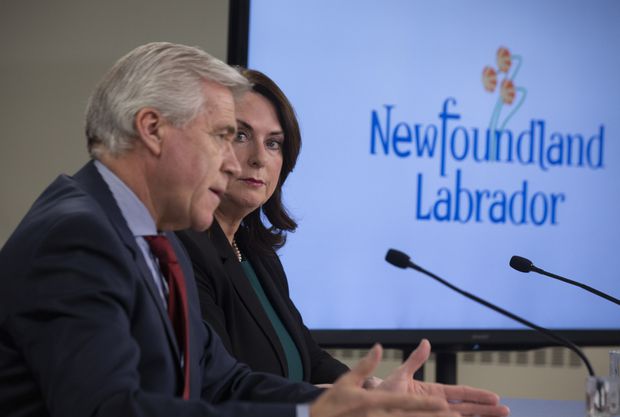The following text was excerpted from the media outlet cited on March 11, 2020 and is provided to Noia members for information purposes only. Any opinion expressed therein is neither attributable to nor endorsed by Noia.
From The Globe and Mail
The sudden collapse of world oil prices has focused much attention on the province of Alberta and its finances. Rather less attention has attached to Newfoundland and Labrador. Sliding toward bankruptcy even before the current crisis, the province may soon be hurtling over the proverbial fiscal cliff.
Alberta’s net debt as of last year stood at $27.5-billion. Newfoundland and Labrador, with less than one-eighth of Alberta’s population, owed $15.4-billion. That’s direct government or “tax-supported” debt. Add in the broader public sector, notably the province’s power utility, Nalcor, and that balloons to something closer to $25-billion today, or roughly two-thirds of the province’s GDP. And it is only going to get worse from here.
Ostensibly Nalcor’s debts are “self-supporting,” meaning they can be financed by charges to the province’s power consumers. The galloping debacle known as Muskrat Falls has exposed that fiction. Announced with much fanfare, inflated revenue forecasts and bogus accounting in 2010, the massive hydroelectric project is now an acknowledged fiasco, years behind schedule and costing more than twice its original estimate of $6.2-billion.
Were the costs of servicing the project’s debts to be passed on to consumers, it would mean a doubling of electricity bills – unthinkable in a province in which nearly half the population depends on electricity to heat their houses. Were the province instead to borrow the difference, its debt-service costs would soar from about $1.4-billion today to more than $2-billion, or roughly a third of the revenues it collects annually.
Not that the latter are in short supply. Thanks in large part to its oil wealth, Newfoundland and Labrador’s economy generates much more in revenues than any other province – about a third more than the national average. The problem is that it spends even more – in excess of $8-billion annually, against roughly $6-billion in taxes and other revenues. It gets about a billion dollars from the feds, and borrows the rest.
That was unsustainable enough when oil prices were at US$65 a barrel, the price on which the last budget’s forecasts were based. With prices now at about half that level, the province stands to lose hundreds of millions in royalties alone, to say nothing of the broader impact of a recession. Cut spending, then? The province’s Liberal government tried that early in its first term, ran into stiff opposition and gave up. Spending cuts are still penciled in, but always for future years.
With its debt set to soar, even as GDP falls, the province’s finances are already blinking red. But now look further ahead. Newfoundland and Labrador’s population is both shrinking and aging; both trends are certain to continue. By 2040, the province’s “medium” projection suggests, roughly one-third of Newfoundland and Labrador’s population will be over the age of 65, up from 22 per cent today.
Health care currently consumes nearly 40 per cent of provincial revenues. What will that ratio have grown to by then? The province’s remaining young people can do the math as well as anyone. How many of them will stick around to see their predictions borne out?
The question that naturally arises, in view of this kind of spiral, is: Will the province default on its debts? Or will the federal government bail it out? The answer to the second is: The bailout has already begun. The first installment came through last year’s $2.5-billion “renewal” of the Atlantic Accord – a grand name for a crude shakedown, whereby the government of Newfoundland and Labrador threatened the seats of MPs from successive federal governments to keep the payments flowing from Ottawa even as the province became ineligible for equalization.
Next, it would seem, is a deal to relieve the province of the burden of Muskrat Falls. The terms of the agreement announced last month remain opaque, but it appears to involve some attempt to “monetize” the project, selling off bits in exchange for a share of the revenues they generate. The federal government might even be the purchaser, which, if past practice is any guide, sets up a future scenario in which Ottawa signs over the revenues from assets it purchased from Newfoundland and Labrador … back to Newfoundland and Labrador.
It’s far from clear that even this will be enough to save the province. A default, of course, would be catastrophic, not only for Newfoundland and Labrador but for the other provinces, whose own debts would come under suspicion. But a bailout would be even worse. If Newfoundland and Labrador can be bailed out, the other provinces will say, why can’t we? And so long as the bailout option is available, what incentive do any of them have to take the hard steps necessary to rein in their own spiraling debts?
The federal government’s finances are often said to be sustainable. But it will be increasingly difficult to disentangle them from those of the provinces. Newfoundland and Labrador may be the first test.






